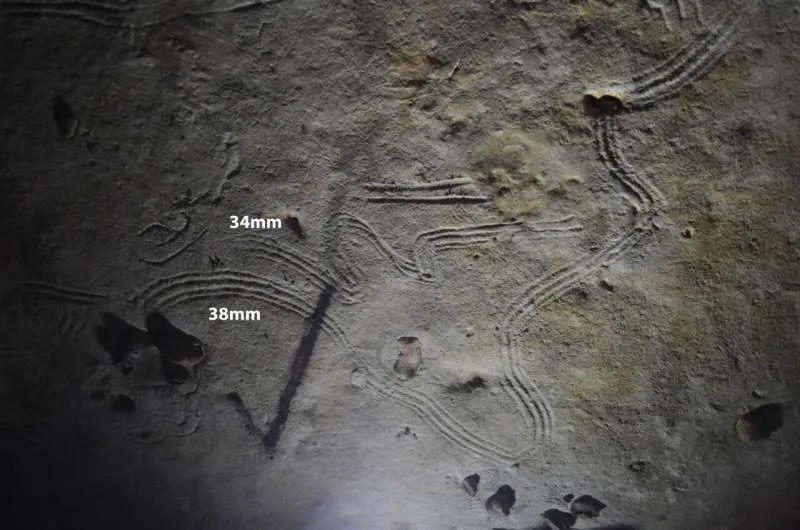A recent study conducted by researchers at Tel Aviv University has introduced a compelling reinterpretation of prehistoric cave art—specifically addressing the often-overlooked presence of young children within deep subterranean painting sites. Traditionally considered passive observers or learners in these ancient rituals, children are now believed to have played an active and spiritually significant role.
Uncovering the Presence of Children in Cave Art Sites
Archaeological research has revealed clear evidence that children, some as young as two years old, were physically present at the sites of prehistoric cave art. There are over 400 caves across regions such as France and Spain that date from approximately 40,000 to 12,000 years ago. Within these caves, scholars have identified numerous children’s handprints and finger markings, alongside footprints intermingled with those of adults.
Such findings have long raised perplexing questions: Why were very young children brought into such dangerous, complex environments? These underground chambers often required crawling through tight crevices, descending vertical shafts, and enduring areas of reduced oxygen levels—an arduous undertaking even for experienced adults.
From Education to Spiritual Mediation
Until recently, prevailing theories suggested that children were included in these ventures primarily for educational reasons. They were taken long to witness or learn the cultural practices of their community. However, the team from Tel Aviv University, including Dr Ella Assaf, Dr Yafit Kedar, and Professor Ran Barkai, proposes an alternative interpretation. Their research, published in the journal Arts, suggests that these children were not simply apprentices but were believed to possess spiritual capabilities that made them essential to the rituals conducted in the caves.
Drawing on anthropological insights from Indigenous societies across history, the researchers argue that children were perceived as ‘liminal beings’—existing on the threshold between this world and the spiritual or supernatural. Their perceived proximity to the world from which they had recently emerged (pre-birth or early life) made them ideal mediators between the human and the non-human.
Caves as Portals
Many ancient cultures viewed caves as symbolic gateways to the underworld. They were spaces where communication with ancestral spirits, natural forces, and otherworldly beings could be initiated through ritual. In such contexts, children’s involvement was not incidental but essential. Their physical presence and artistic contributions, including hand stencils and finger tracings, may have been integral to the spiritual efficacy of the rituals conducted within these spaces.
According to Professor Barkai, these subterranean journeys were part of shamanic practices aimed at resolving existential or communal dilemmas by seeking counsel from metaphysical entities. Within this framework, children were not only welcomed but revered for their perceived ability to traverse the boundaries of existence and act as messengers between worlds.

The Cultural Significance of Children in Prehistoric Societies
The study emphasises that in many Indigenous traditions, children are not seen as passive figures but as spiritually attuned agents with distinct mental and cognitive attributes. This perception shaped their active involvement in communal rituals, including cave painting. The researchers argue that prehistoric hunter-gatherer societies likely held similar beliefs, incorporating children into these practices as part of a broader cosmological worldview that sought to honour and communicate with nature, ancestors, and the cosmos.
Such integration reflects a more nuanced understanding of childhood in ancient cultures—one that recognises children’s roles in maintaining the delicate balance between humans and the wider spiritual and natural environment. Their contributions, both symbolic and physical, were therefore vital to the cohesion and spiritual continuity of their communities.
This re-evaluation of children’s involvement in prehistoric cave art invites us to reconsider long-held assumptions about early human society. Rather than viewing children merely as recipients of cultural knowledge, this perspective illuminates their central, even sacred, role within ritual practices. Their inclusion in deep cave journeys and artistic expression speaks to a profound recognition of their spiritual capacity.